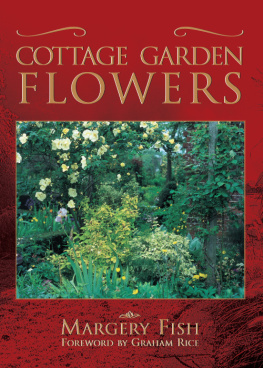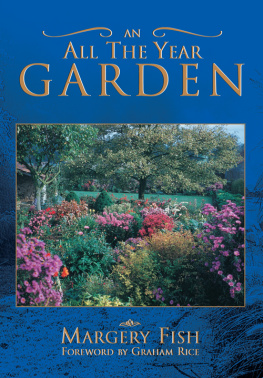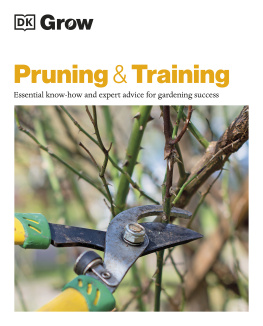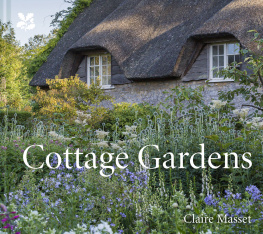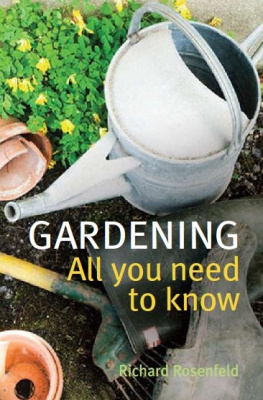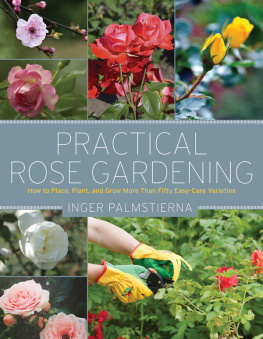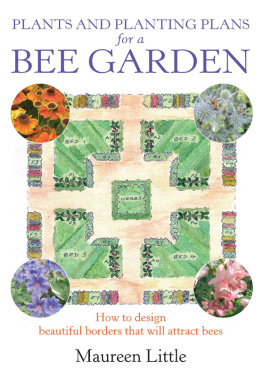
First published 1961
By W. H. and L. Collingridge Limited
Reissued 1970
By David and Charles (publishers) Limited
Reprinted in 1966, 1971, 1972
Reissued in paperback 2001
Lesley Boyd-Carpenter
The right of Margery Fish to be identified as the author and illustrator of this work has been asserted by her estate in accordance with the Copyright, Designs and Patents Act 1988. Foreword by Graham Rice 2001
Special acknowledgement to all those at East Lambrook Manor Slide Library and also Andrew Norton for their kind permission to use the photographs.
All rights reserved. No part of this publication may be reproduced, stored in a retrieval system or transmitted, in any form or by any means, electronic, mechanical, photocopying, recording or otherwise, without the prior permission of the copyright owners.
A catalogue record for this book is available from the British Library.
First eBook publication 2012
eBook ISBN 9781849941051
Foreword
Many of us garden the way we do largely because of Margery Fish. Her disagreement with her husband Walter over the style of gardening at their home at East Lambrook Manor in Somerset reflected the divergence of views amongst gardeners generally: Walter liked dahlias, he liked big bawdy dahlias; he liked them in rows and he liked them amongst his wifes more subtle plantings.
Margery acquiesced, for his sake, but her heart was never in it and each spring there were fewer tubers to replant as they rotted in storage.
Walter Fish represented the past, Margery represented a more distant past transformed into the future. After his death Margery pursued her own vision of a modern, more imaginative form of cottage gardening, using the plants of the past and the dahlias were forgotten except inasmuch as they sparked memories of her husband.
In her original introduction to Cottage Garden Flowers forty years ago, Margery Fish resigns herself to the gradual disappearance of the small cottage gardens around her but encourages us to grow and preserve the plants that were so characteristic of them, as she did herself.
She lovingly describes the huge number of these delightful plants that she grew, and enlightens us as to their qualities and quirks. As a result of her popularising these fascinating and often demure plants, and the work of the National Council for the Preservation of Plants and Gardens and of the Cottage Garden Society, many have survived and some are far more widely grown than they have ever been.
But, sadly, many of the plants Margery re-discovered and grew so tenderly have gone most of the primroses and double daisies she discusses here are now only with us in her words; virus diseases and vine weevil having seen them off.
Margery Fishs imaginative adaptation of the traditional cottage-garden style that she saw disappearing around her bringing old-fashioned plants together with contemporary plants in the same style has dramatically influenced the way we garden now. Todays mixed borders are a direct descendant of the style Margery Fish created at East Lambrook Manor. In this book her love of these plants from the past, which gave traditional cottage gardens their special aura, shines out. It is largely because of her devotion and her enthusiasm for these treasures that we grow so many today.
Graham Rice,
2001
Introduction
Nowhere in the world is there anything quite like the English cottage garden. In every village and hamlet in the land there were these little gardens, always gay and never garish, and so obviously loved. There are not so many now, alas, as those cottages of cob or brick, with their thatched roofs and tiny crooked windows, are disappearing to make way for council houses and modern bungalows, but the flowers remain, flowers that have come to be known as cottage flowers because of their simple, steadfast qualities.
The gardens themselves were usually small, sometimes only a slip between the cottage and the road, with a tiny patch behind. They were tidy without being prim and were always packed with flowers.
No definite design went to their planting and the treasured flowers were put wherever there was room. There might be a myrtle, grown from a sprig from grandmothers wedding bouquet, pinks from coveted slips, rosemary and lads love, the great red peonies that last so well, and crown imperials grown in a row. Wallflowers and snapdragons grew in the walls, and cheerful red and pink daisies played hide-and-seek between the shells that edged the path.
Plants are friendly creatures and enjoy each others company. The close-packed plants in a cottage garden grow well and look happy. They have the shelter of the wall or hedge that screens them from the road, and the comfortable backing of cabbages and leeks. Pansies and forget-me-nots flower under the currant bushes, nasturtiums frolic among the carrots, and old apple trees give welcome shade.
I am afraid the cottages and their little gardens may disappear completely as the years go by and we shall have to remember them by the flowers. The treasures that made those little gardens so irresistible for so many years must have toughness and determination as well as artless beauty. Great efforts are being made to preserve our old buildings, and we must also cherish the simple flowers that brightened our cottage gardens for so many years.
~ 1 ~
Spring Flowers
The flowers of spring open early in a cottage garden. They have been sheltered all through the winter with walls or hedges, and they get more protection from the plants growing near them.
Aconites and snowdrops will be peeping through in January. Sometimes there is grass outside the cottage gate or it may be on the other side of the road. Snowdrops will sow themselves in grass wherever they can and it is quite usual to see them growing happily in a grass bank opposite a cottage or peopling the rough grass verges along the road. Life in the road is dangerous with cattle passing regularly, and many a plodding foot must descend on those innocent heads, but it does not deter them. Up they come, year after year, with more every season, little white buds between spears of green. I always think they are holding up green hands to clasp the fragile buds and protect them as they push through the soil. Aconites sow themselves too, but not quite so regularly or generously.
Symphytum grandiflorum* is not a spectacular plant but the foliage is evergreen and the little hanging flowers in cream, tipped with orange, flower in January. Its old name is Cherubin and Seraphim and it is sensible to flower so early because we should not pay much attention to it later on. The foliage is at its best early in the year too. Always rough and dark, it gets rather coarse by the end of the summer but it does not show much in the dark corners in which it likes to grow.
Violets have been blooming from November but they flower in earnest from February onwards, and there will be little orange crocuses springing up in odd corners.
Omphalodes verna is really an April flowerer but it usually cannot wait till then. I often see a little blue eye looking up at me in really wintry February weather when all good children should be asleep. There is more than a suggestion of pink about these early flowers and when they come to their official opening, they are the bluest of the blue. In fact Blue-Eyed Mary is the name they go by. This is said to have been Marie Antoinettes favourite flower and I believe it grew wild in the woods near Schnnbrun in Austria. Although its flowers are so lovely and contrast so well with the pointed hairy leaves, it is rather untidy in its growth. It makes long stems with the little rosettes of leaves and flowers at the end of them, and a few tattered brown leaves on the way. It really needs to be grown in a mass to be effective but in a cottage garden the other plants conceal the ugly bare stems and we enjoy the little blue flowers tumbling among the herbage.

